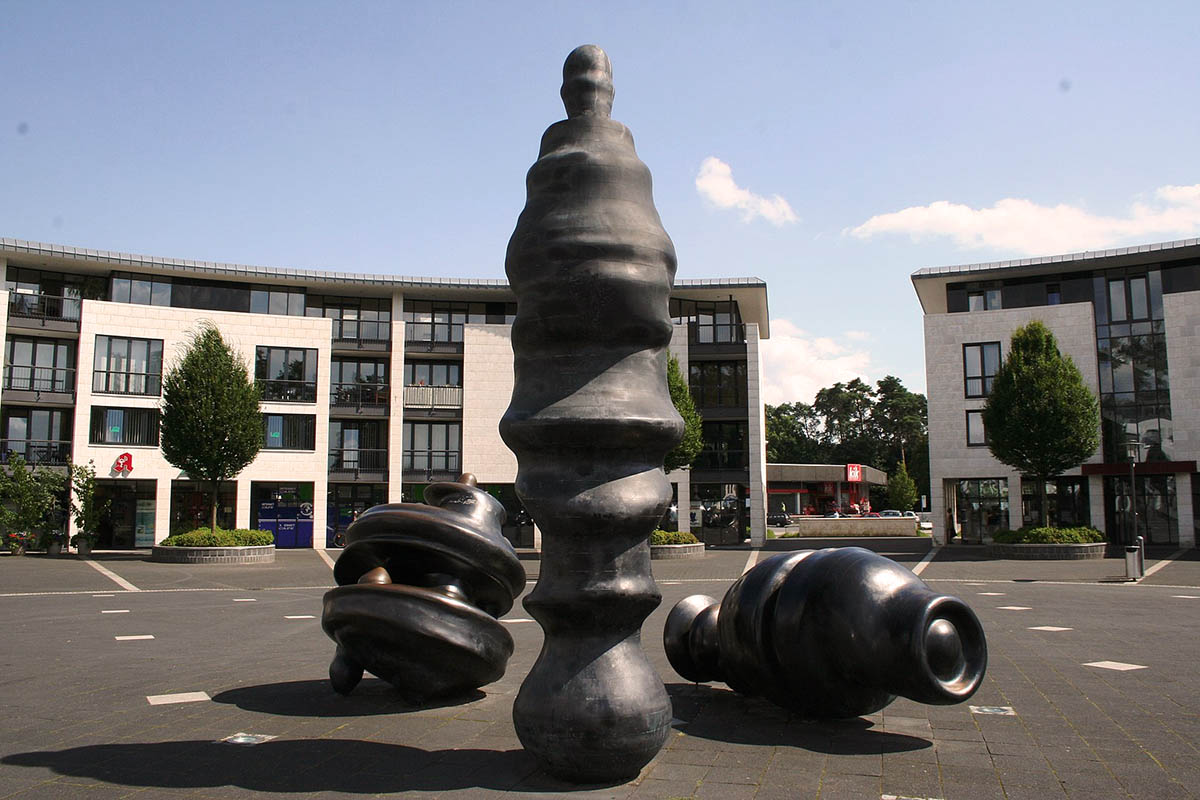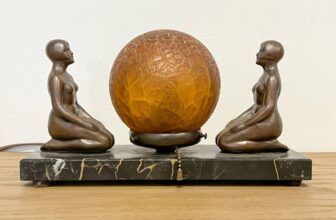
Tony Cragg’s Most Famous Sculptures
Tony Cragg stands as one of the most influential sculptors of the late 20th and early 21st centuries. Renowned for his innovative approach to materials and form, Cragg has redefined what sculpture can be, blending organic shapes with industrial influences to create works that challenge and delight viewers worldwide. But who is Tony Cragg? What makes his sculptures so significant, and where can you see them? Let’s embark on a journey into the artistic world of Tony Cragg.
Who is Tony Cragg? A Brief Introduction
Born in Liverpool, England, in 1949, Tony Cragg grew up amidst the vibrant culture of post-war Britain. He initially studied art at the Gloucestershire College of Art before moving to the Royal College of Art in London. His early exposure to a variety of artistic styles and materials laid the foundation for a career that would push the boundaries of sculpture.
Cragg’s work spans a variety of materials, wood, stone, bronze, steel, and most notably, plastics and found materials. His sculptures often explore the relationship between nature and technology, form and function, chaos and order. Over the decades, Cragg has developed a distinctive visual language characterized by fluid, biomorphic shapes and a fascination with surface texture.
Tony Cragg’s Most Famous Sculptures
Some of Tony Cragg’s most famous sculptures have become iconic in the contemporary art world. Here are a few of his landmark works that have cemented his reputation:
1. “Points of View” (2006)
This series of large, colorful sculptures is one of Cragg’s most recognizable bodies of work. “Points of View” explores the idea of perception and perspective. Using brightly colored synthetic materials, Cragg creates abstract, organic forms that seem to twist and shift as the viewer moves around them. The sculptures appear simultaneously fluid and solid, inviting contemplation of space and form.
2. “Stack” (1986)
One of Cragg’s early breakthrough pieces, “Stack,” is composed of carefully arranged found objects, usually plastic or wood, that are piled into a vertical column. The work is a meditation on accumulation and the natural order of things, revealing beauty in discarded materials. “Stack” exemplifies Cragg’s ability to find art in everyday objects and challenge notions of value.
3. “New Forms” (1980s–1990s)
Throughout the 1980s and 1990s, Cragg produced numerous sculptures under the “New Forms” series. These works are known for their biomorphic shapes, resembling natural organisms or geological formations. Often created from wood or stone, these sculptures emphasize flowing, layered surfaces that seem alive and evolving.
4. “Glut” (1980)
“Glut” is another important early work where Cragg used scrap wood and plastic to create an abstract composition that comments on consumerism and waste. The title itself, “Glut”, points to the excess of material culture. It remains a striking example of Cragg’s early interest in recycling and transformation.
5. “Fiber” (2009)
In “Fiber,” Cragg experimented with glass fiber-reinforced plastic to produce smooth, translucent surfaces. These sculptures are reminiscent of cells or organic tissues, pushing the boundaries of what sculpture can communicate about life and materiality.
What is Tony Cragg Known For?
Tony Cragg is primarily known for:
Innovative Use of Materials: Cragg has been a pioneer in using unconventional materials such as industrial plastics, found objects, and composites. His choice of materials often reflects the tension between nature and human-made environments.
Biomorphic Forms: Many of his sculptures evoke organic shapes, cells, rocks, bones, yet remain abstract. This blurring of natural and artificial forms creates a unique visual language.
Exploration of Surface and Texture: Cragg’s works often play with smooth, layered, or intricate surfaces, inviting tactile engagement even though touching is rarely allowed.
Environmental Commentary: Through the reuse of discarded materials and the creation of forms that mimic natural processes, Cragg’s work subtly addresses issues of consumerism, waste, and ecological balance.
Spatial Awareness: Cragg’s sculptures are highly interactive, encouraging viewers to move around and see the piece from different angles, discovering new perspectives with each step.
How Did Tony Cragg Make His Sculptures?
Tony Cragg’s sculptural process is as varied as his materials. Here are some insights into how he creates his iconic works:
1. Material Experimentation
Cragg often begins by collecting materials, these can be industrial scraps, plastic, wood, or even natural stones. For example, early in his career, he scoured junkyards and recycling centers to find objects that could be repurposed into sculpture. His curiosity about the properties of these materials drives his creative process.
2. Layering and Stacking
One hallmark technique Cragg developed is the careful layering and stacking of objects or materials to form larger sculptures. For example, in the “Stack” series, various pieces are arranged vertically, creating rhythm and movement. This technique not only gives form but also explores gravity and balance.
3. Carving and Shaping
When working with wood or stone, Cragg employs traditional carving methods, but with a contemporary eye for abstraction and fluidity. His surfaces are often polished or textured to emphasize the natural qualities of the material.
4. Molding and Casting
For more experimental works, especially those involving plastics or composite materials, Cragg uses molding and casting techniques. He might create an initial form from clay or another malleable substance, then produce molds to cast the final piece in resin or fiberglass.
5. Digital Technologies
In recent years, Cragg has incorporated digital tools into his process. Using 3D modeling software and CNC machines, he can create complex, precise forms that would be difficult to achieve by hand. This integration of technology aligns perfectly with his themes of nature and artificiality.
6. Painting and Finishing
Some of Cragg’s sculptures, particularly those in synthetic materials, are painted in bright, glossy colors. This finish not only enhances the visual impact but also challenges traditional notions of sculpture as muted or monochrome.
How Much Are Tony Cragg’s Sculptures Worth?
Tony Cragg’s sculptures are highly sought after in the contemporary art market. The value of his works varies depending on the size, material, provenance, and historical significance, but here are some general estimates:
Small to Medium Sculptures: These can range from $50,000 to $250,000 at auction or through galleries.
Large-scale Works: His monumental sculptures, especially those made of bronze, steel, or complex composites, can fetch upwards of $500,000 to several million dollars.
Major Public Commissions: Cragg has completed several large-scale public sculptures valued in the multi-million-dollar range, reflecting their cultural importance and scale.
For example, a bronze sculpture from his “New Forms” series sold at auction for over $1 million, illustrating the high regard collectors have for his work. His pieces also regularly appear in major museums and private collections worldwide, further cementing their value.
Where Are Tony Cragg’s Sculptures Located?
Tony Cragg’s sculptures are exhibited in major museums, galleries, and public spaces around the globe. Here are some key locations where you can find his work:
1. Tate Britain and Tate Modern (London, UK)
Both branches of the Tate house important works by Cragg, reflecting his status in British contemporary art.
2. The Guggenheim Museum (New York, USA)
Cragg’s sculptures have been exhibited here multiple times, and the museum’s collection includes some of his significant pieces.
3. The Yorkshire Sculpture Park (West Yorkshire, UK)
This outdoor sculpture park features several of Cragg’s monumental works in a natural setting, highlighting his interest in nature and space.
4. Kunsthalle Basel (Switzerland)
Cragg’s work is part of the collection and has been featured in exhibitions emphasizing European contemporary sculpture.
5. Public Spaces in Germany
Since moving to Germany in the 1980s, Cragg has become an important figure in the German art scene. Several cities, including Düsseldorf and Wuppertal, feature his public sculptures. The Tony Cragg Foundation in Wuppertal also manages a large studio and exhibition space.
6. Museum of Modern Art (MoMA), New York
MoMA has exhibited Cragg’s sculptures in retrospectives and group exhibitions showcasing postwar and contemporary art.
7. Private Collections Worldwide
Many of Cragg’s sculptures are held in private collections, appearing at international auctions and art fairs regularly.
The Legacy of Tony Cragg
Tony Cragg’s influence extends beyond his sculptures themselves. As a professor and mentor, he has helped shape a new generation of sculptors. His blending of traditional craftsmanship with cutting-edge technology exemplifies how contemporary sculpture can remain relevant in a rapidly changing world.
Cragg’s works continue to provoke questions about how we perceive objects, nature, and industrial culture. They blur the line between art and science, chaos and order, the organic and synthetic. His sculptures are not just objects but experiences, inviting viewers to slow down, look closer, and discover new forms in familiar materials.
Tony Cragg’s artistic journey is a testament to creativity’s power to transform the mundane into the extraordinary. Through his innovative use of materials and form, he has expanded the possibilities of sculpture and enriched the cultural landscape worldwide.
Whether you encounter his sculptures in a museum, a public park, or a private collection, the experience of engaging with Cragg’s work is always unique, each angle revealing new insights, each surface suggesting hidden depths. In the world of contemporary art, Tony Cragg remains a towering figure whose legacy will inspire generations to come.
If you ever get the chance to see a Tony Cragg sculpture in person, take a moment to walk around it, let your eyes follow its curves, and allow yourself to be drawn into the intricate dance between material and form. It’s an encounter with the sublime, crafted by one of the masters of modern sculpture.




